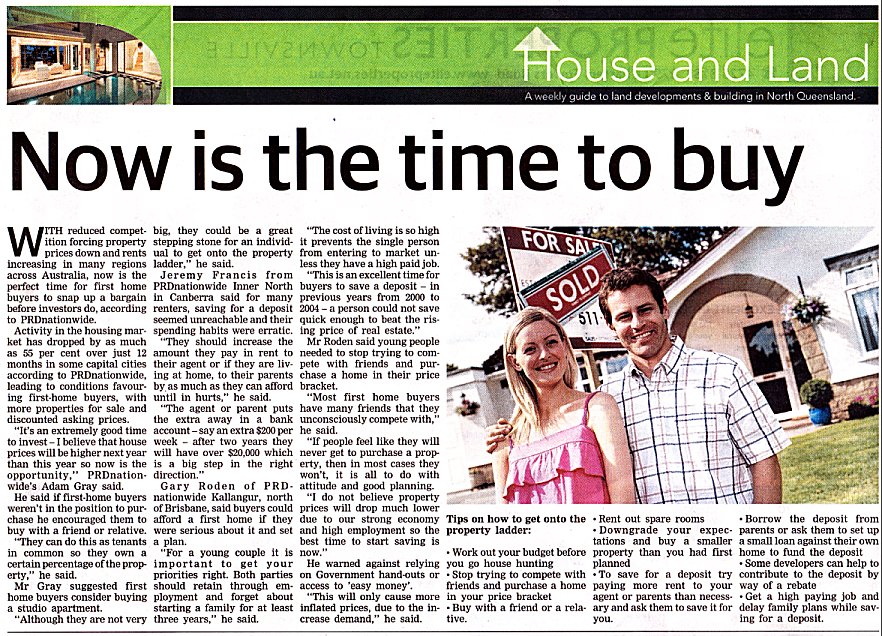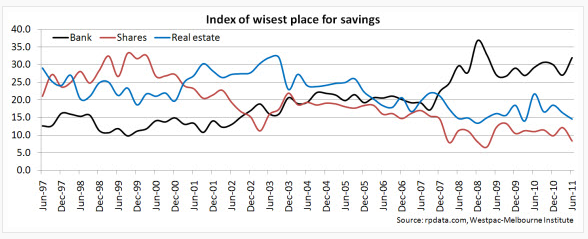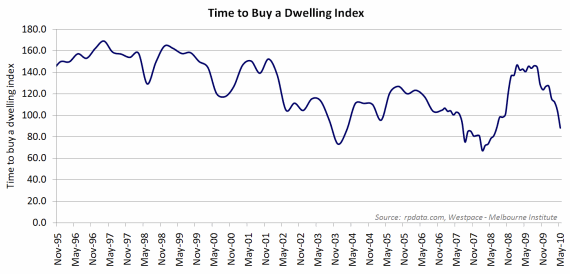My, that was a quick week. A couple of things in the thinker this weekend.
The see-saw
After a very successful muse last weekend about the economics of Futureboom! I have been thinking a little more on the intricacies of what I can see happening in the macro-economy. Glenn Steven’s speech posted by H&H this week certainly clarified some of my thoughts on his position, a position that I think was best summed-up by a reader David with this comment from last weeks’ muse.
I think the RBA has got exactly this matter in the front of its collective mind. They are prepared to hold policy just tight enough to let some pressure out of the housing market, push up domestic savings and restrain consumption.
Over time, this will see Debt:GDP come down in an orderly way and the risk to our economy of violent external shocks will abate.
There are two things that have to happen for our external indebtedness to come down with relatively little pain. First, we have to maintain our improved trade performance. Second, we have to reduce externally-sourced, consumption-driven borrowing.
Of these two, the variable that is within our control is the second factor: reducing our appetite for borrowing. This translates into having the housing sector deflate over time. This is exactly what is happening. As long as it is gradual and orderly, we should all be happy enough about this. It does mean that the domestic financial sector will experience a phase of reduced growth in their assets and profits, and it does mean that wealth-driven consumption spending will decline. It does mean that household savings and the AUD should remain at historically high levels.
Restraint – it is the new black.
The overall effect of this policy is something H&H calls “the great disleveraging”. I fully support this policy. In fact, I have been waffling on about the need to re-direct the Australian economy towards production ever since I started blogging.
So is this a plan? The comment above suggests it is. And certainly the RBA (and the government) believe they have room to maneuver the economy in this way for two reasons.
- The demand for resources by our trading partners and the associated economic activity in meeting that demand, will provide a large enough buffer to offset the losses in other parts of the economy during the transition.
- The housing market (the largest component of the private sector’s debt) is actually quite resilient because the debt is concentrated in high-income, older workers who can handle the repayments and the overall debt to asset ratio is quite low.
Both government and RBA prefer to emphasise the positive in the adjustment (the mining boom). But the effects of this macroeconomic management are entirely clear and it beggars belief that authorities don’t know what they’re doing here. The balancing act between the investment driven resource sector and the “disleveraging” of the private sector debt by the RBA is something I have referred to before as “Steering Godzilla’s see-saw with a mallet“. If you take a brief look at a few indexes of consumer restraint you can see that the plan is working.
What you will also notice is that consumer restraint is having a dual effect. It is obviously sapping the demand for new credit, but it is also helping stabilise the banking system by switching the banks’ dependence upon wholesale debt for growth in deposits.
What I find quite remarkable about this strategy is that I am yet to see anyone outside of MacroBusiness recognise that it exists. This may just be because the plan itself seems to require that the general public not actually understanding what the plan is.
Which leads me to risks. There are obviously many external risks, H&H covered most of the good ones yesterday. But recently I have been musing the internal risks. Here are a couple at the top of my list.
Risk 1 – The housing market. As H&H has stated in the past, the RBA is counting on some form of investor irrationality in the housing sector. Obviously if the RBA and government are targeting a slowing of credit issuance then this is going to have a flow-on effect to the credit driven markets. We are certainly seeing that in the house prices. But at this point there still seems to be a belief that this is just a low in the cycle before its next rally upwards. The last time the market was in this position in 2008 the government and the RBA joined forces to pump the market back up. Obviously this plan is an attempt to unwind that previous policy so you have to ask how long will the market wait for a bounce back, and what it will do when it doesn’t come. The housing champions are certainly doing their best to keep the market positive but with market growth already below inflation, and well below the bank rate , I have to ask “how long will non-owner occupiers wait to see a return of the good times?”. My assumption is that the RBA will attempt to act if the market looks to be deflating too quickly, but that brings me to the next risk.
Risk 2 – Systemic balance – What happens if the RBA drops rates in order to manage the housing market up if investors do get rational? Will this send a signal to the other markets that mining is not all it is cracked up to be. Obviously the dollar will fall, will this signal any other market?
Risk 3 – Godzilla – The sheer size of private sector debt in Australia is very concerning. The risk is obviously that the RBA and Treasury Boffins have underestimated the damage that a shift in that debt monster can have on the economy. Housing debt alone is $1.2 Trillion, and even though it has slowed in growth recently it is still managing to knock up 6% YoY. Mining investment is the RBA’s counterweight, but it could just be that a slow down in credit issuance has a far greater negative effect than the resources sector can counter-act.
Risk 4 – Mining Investment – Obviously one of the cornerstones of the plan for economic adjustment is the resource driven investment boom. The problem is that the ability for the mining sector to actually deliver on its promised investment is governed by many things. Weather, capacity constraints, global economics and good old local politics are amongst many other factors that set limits on actual mining investment. According to Tim Colebatch from the Age, the mining sector actually has a history of over-estimating its potential.
Yesterday’s Bureau of Statistics survey of business investment reveals a widening gulf between what mining companies say they will invest and what they actually invest.
Three months ago, they said they had invested $22 billion in the six months to December 31. But they told the ABS they would invest $35 billion in the six months to June.
Uh-huh. Well, three months later, we find they invested only $10 billion in the March quarter.
Sure, there was a cyclone and floods, and yesterday’s figures are only preliminary. But 2010-11 will be the fifth consecutive year in which mining investment will stop well short of the forecast.
Risk 5 – Exuberance returns – This is the risk the RBA seems most cognisant of. If confidence in the “housing always goes up” thesis returns, consumption will boom and the economy threaten an inflationary blowoff ala 2008. Given the RBA’s itchy rates finger, this looks like the lowest of all risks.
So there you have it, just some of the things I have been contemplating in regards to “the see-saw”.
Finally, I must say, if the RBA and the government do manage to pull this transition off then it will be one of the most amazing pieces of economic wizardry I have ever witnessed, especially since most people won’t have even noticed.
Endless spruiking
As my long term readers would know one of my pet hates is that members of the real estate industry are not governed by the same rules as other traders of financial wares. I have vented my frustrations about this point a number of time previously, usually with a rant like this.
I have previously spoken about my annoyance with the liberties available to the Real Estate industry because their agents are do not have to conform with the Australian Financial Services Licencing Act. I find this a bizarre legal exception, most especially because the housing market represents $4 trillion of national wealth versus $1.2 trillion in shares and roughly $1.2 trillion in various forms of deposits.
So while your local bank teller has to provide prudent financial disclosure for simply trying to inform you that you might be better off with a 6.5% term deposit over your standard bank account, your local real estate agent can spruik to his or her hearts content about the virtues of the “never declining” housing market with impunity.
I wouldn’t mind so much if I couldn’t find such blatant flaunting of that absence of oversight. But when even the national newspaper has examples of this type of behaviour it is very hard to miss. I am regularly sent examples by my readers and most of the time I can ignore it. But every now and then I am sent an example that even shocks me. So to end this muse I give you this real estate and family planning article from the Townsville Bulletin on June 4th. I’m the first to concede that real estate has cycles and it’s when others don’t want to buy that you should, but given the above structural adjustment in the economy, do you think we’re there yet?
Even if we are, is it appropriate that Real Estate Agents are offering family planning advice and telling young buyers to loan money from their parents to “get in now before it is too late”.


